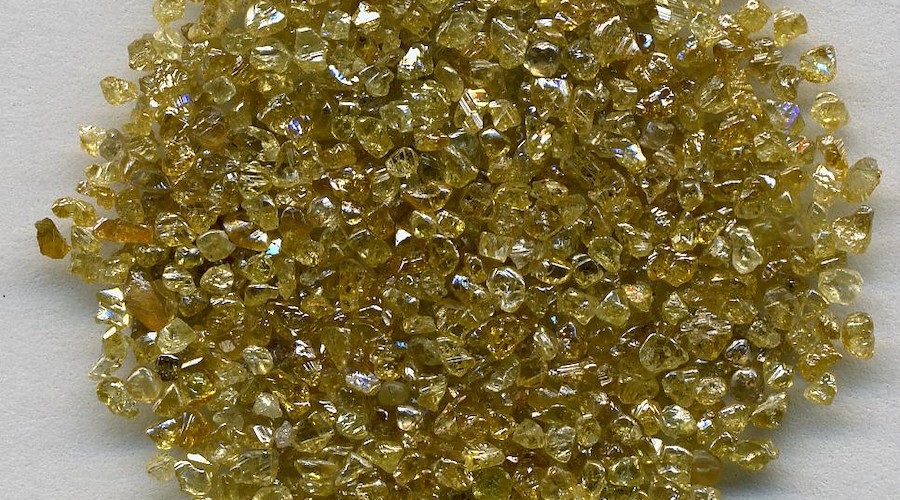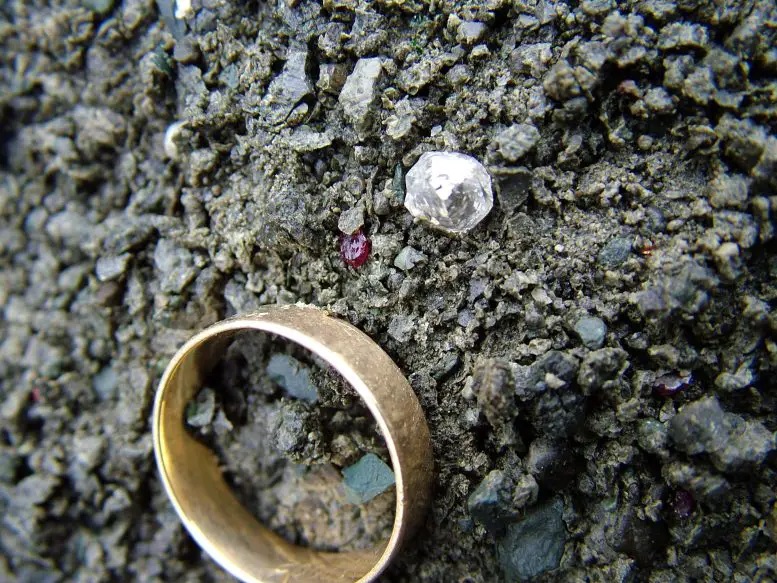New findings hold the potential to spark future diamond discoveries.
An international team of scientists, led by the University of Southampton, has found that the breakup of tectonic plates is the main driving force behind the generation and eruption of diamond-rich magmas from deep inside the Earth.
This insight could significantly influence the trajectory of the diamond exploration industry, guiding efforts to locations where diamonds are most probable.
Diamonds, which form under great pressures at depth, are hundreds of millions, or even billions, of years old. They are typically found in a type of volcanic rock known as kimberlite. Kimberlites are found in the oldest, thickest, strongest parts of continents – most notably in South Africa, home to the diamond rush of the late 19th century. But how and why they got to Earth’s surface has, until now, remained a mystery.
The new research examined the effects of global tectonic forces on these volcanic eruptions spanning the last billion years. The findings have been published in the journal Nature.
Southampton researchers collaborated with colleagues from the University of Birmingham, the University of Potsdam, the GFZ German Research Centre for Geosciences, Portland State University, Macquarie University, the University of Leeds, the University of Florence, and Queen’s University, Ontario.
Tom Gernon, Professor of Earth Science and Principal Research Fellow at the University of Southampton, and lead author of the study, said: “The pattern of diamond eruptions is cyclical, mimicking the rhythm of the supercontinents, which assemble and break up in a repeated pattern over time. But previously we didn’t know what process causes diamonds to suddenly erupt, having spent millions – or billions – of years stashed away 150 kilometers beneath the Earth’s surface.”
To address this question, the team used statistical analysis, including machine learning, to forensically examine the link between continental breakup and kimberlite volcanism. The results showed the eruptions of most kimberlite volcanoes occurred 20 to 30 million years after the tectonic breakup of Earth’s continents.
Dr. Thea Hincks, Senior Research Fellow at the University of Southampton, said: “Using geospatial analysis, we found that kimberlite eruptions tend to gradually migrate from the continental edges to the interiors over time at rates that are consistent across the continents.”
Geological processes
This discovery prompted the scientists to explore what geological process could drive this pattern. They found that the Earth’s mantle – the convecting layer between the crust and core – is disrupted by rifting (or stretching) of the crust, even thousands of kilometers away.
Dr Stephen Jones, Associate Professor in Earth Systems at the University of Birmingham, and study co-author said: “We found that a domino effect can explain how continental breakup leads to the formation of kimberlite magma. During rifting, a small patch of the continental root is disrupted and sinks into the mantle below, triggering a chain of similar flow patterns beneath the nearby continent.”
Dr. Sascha Brune, Head of the Geodynamic Modelling Section at GFZ Potsdam, and a co-author on the study, ran simulations to investigate how this process unfolds. He said: “While sweeping along the continental root, these disruptive flows remove a substantial amount of rock, tens of kilometers thick, from the base of the continental plate.”
The typical migration rates estimated in models matched what the scientists observed from kimberlite records.
“Remarkably, this process brings together the necessary ingredients in the right amounts to trigger just enough melting to generate kimberlites,” added Dr Gernon.
The team’s research could be used to identify the possible locations and timings of past volcanic eruptions tied to this process, offering valuable insights that could enable the discovery of diamond deposits in the future.
Professor Gernon, who was recently awarded a major philanthropic grant from the WoodNext Foundation to study the factors contributing to global cooling over time, said the study also sheds light on how processes deep within the Earth control those at the surface: “Breakup not only reorganizes the mantle, but may also profoundly impact Earth’s surface environment and climate, so diamonds might be just a part of the story.”
Reference: “Rift-induced disruption of cratonic keels drives kimberlite volcanism” by Thomas M. Gernon, Stephen M. Jones, Sascha Brune, Thea K. Hincks, Martin R. Palmer, John C. Schumacher, Rebecca M. Primiceri, Matthew Field, William L. Griffin, Suzanne Y. O’Reilly, Derek Keir, Christopher J. Spencer, Andrew S. Merdith and Anne Glerum, 26 July 2023, Nature.
Source: scitechdaily.com





